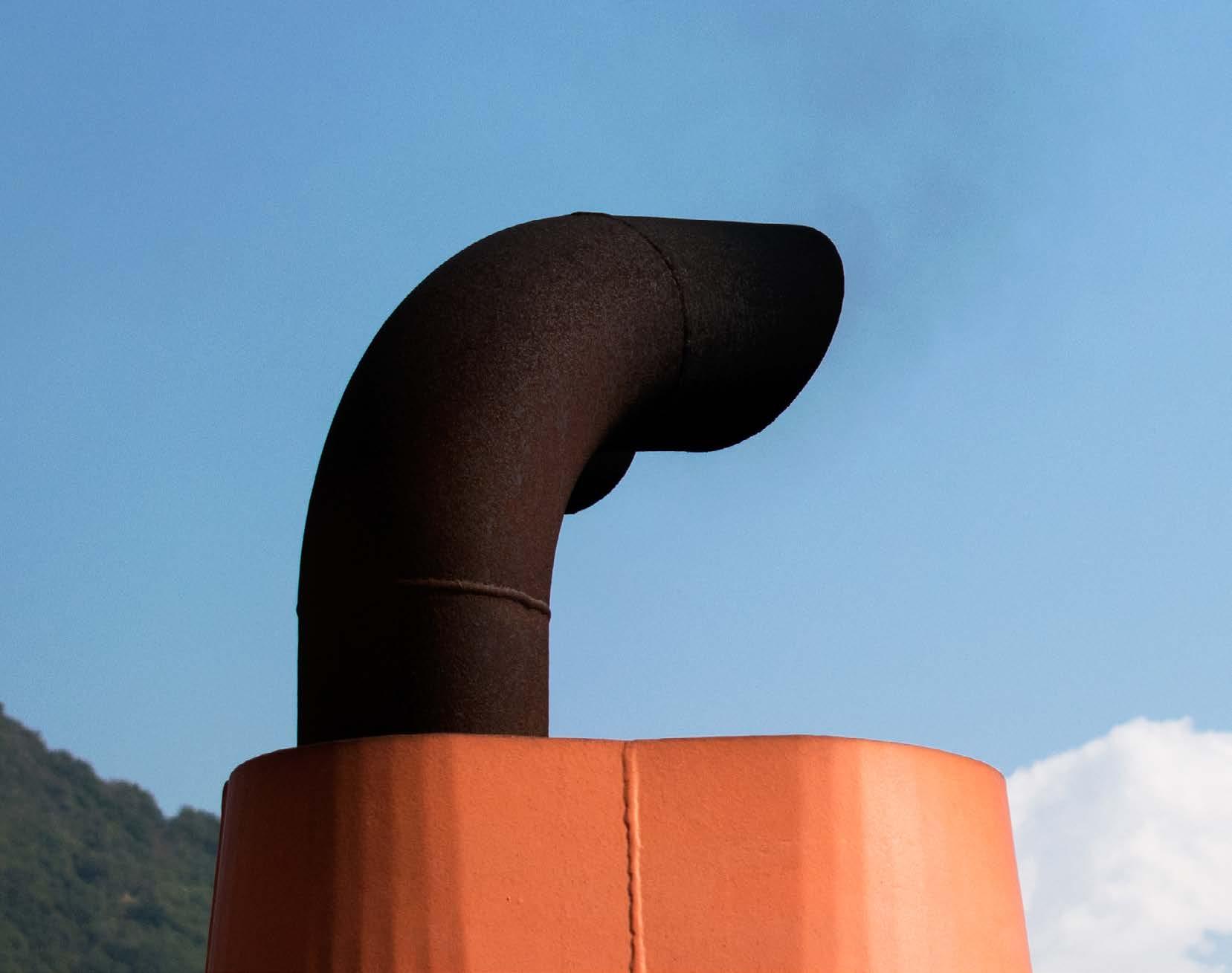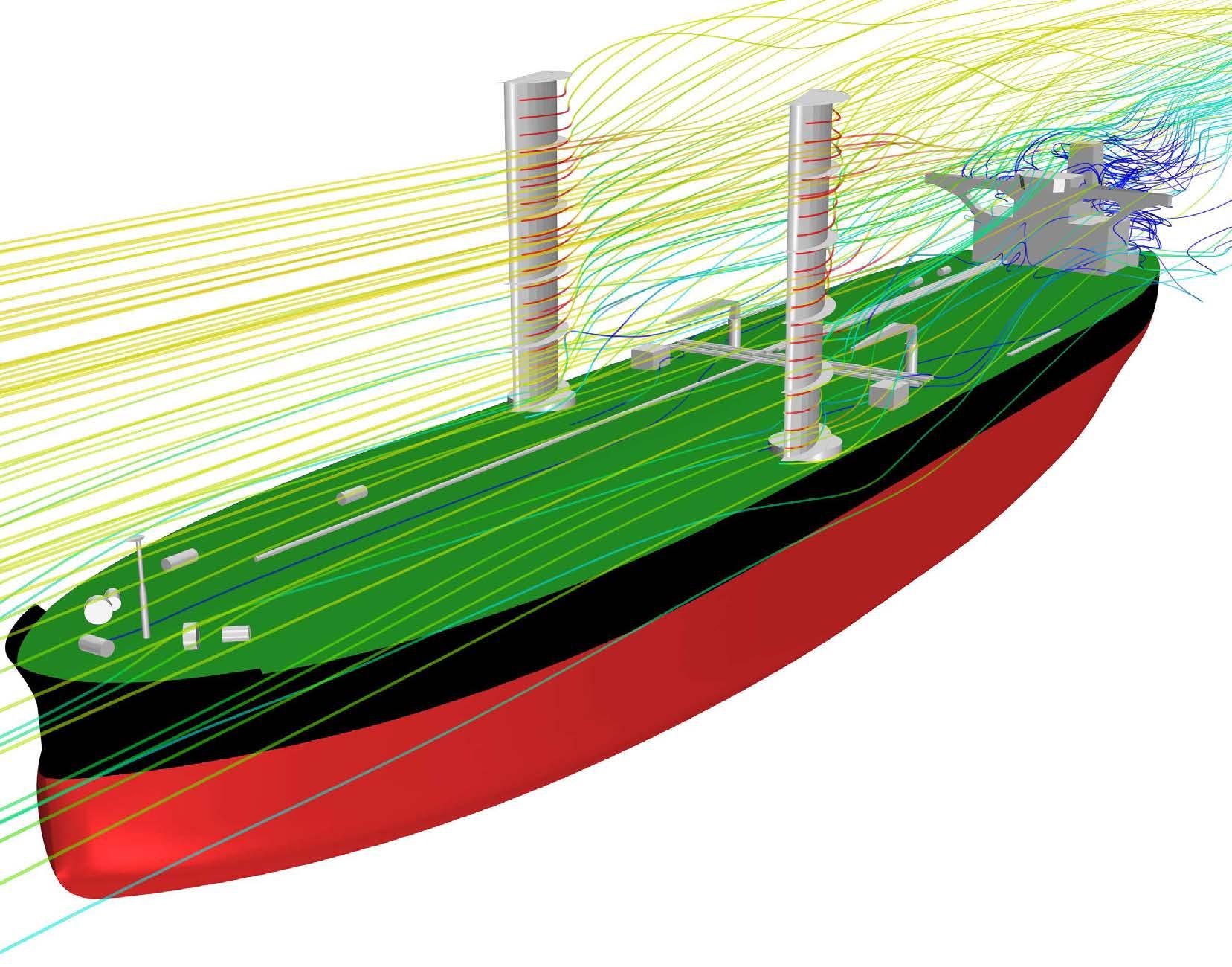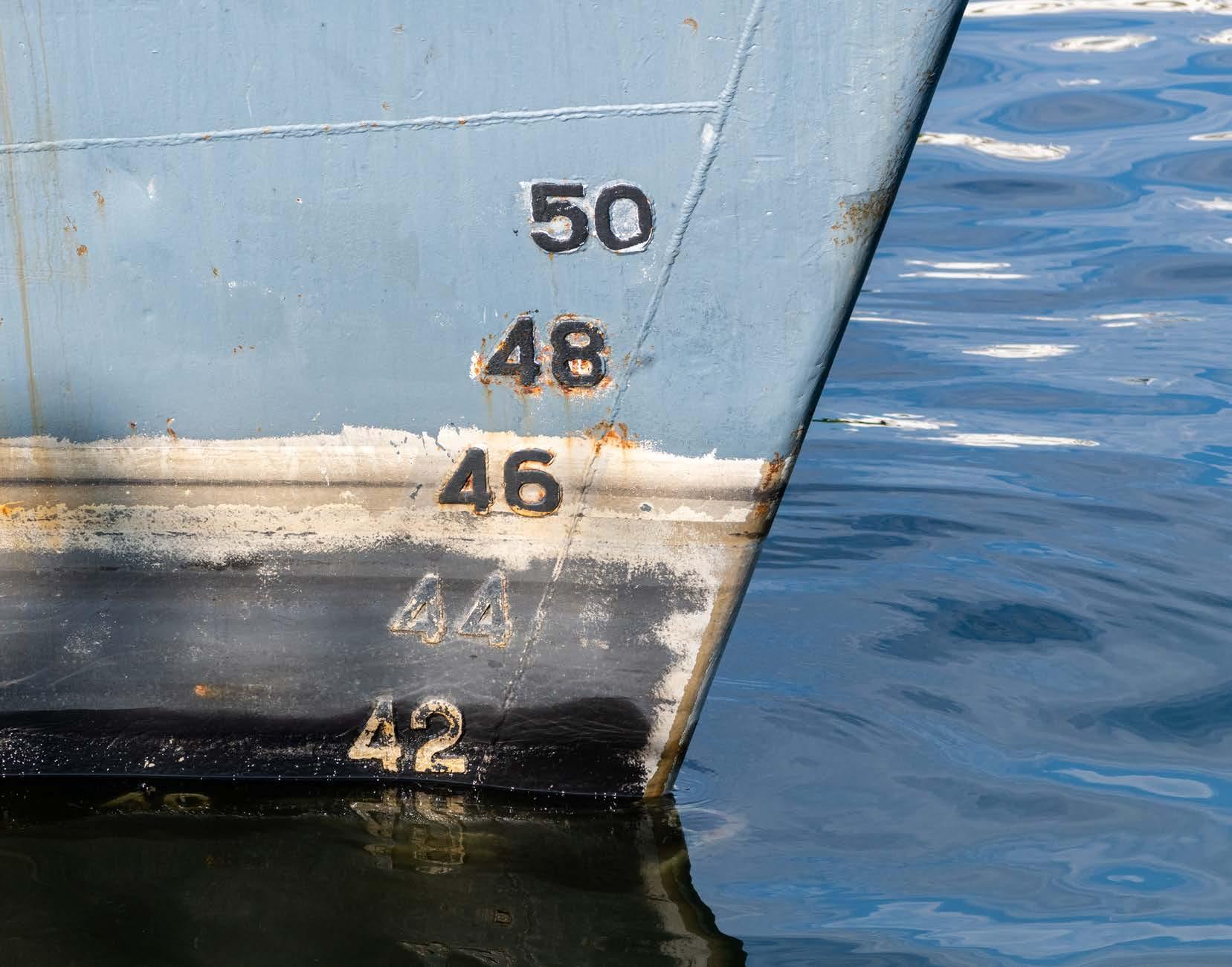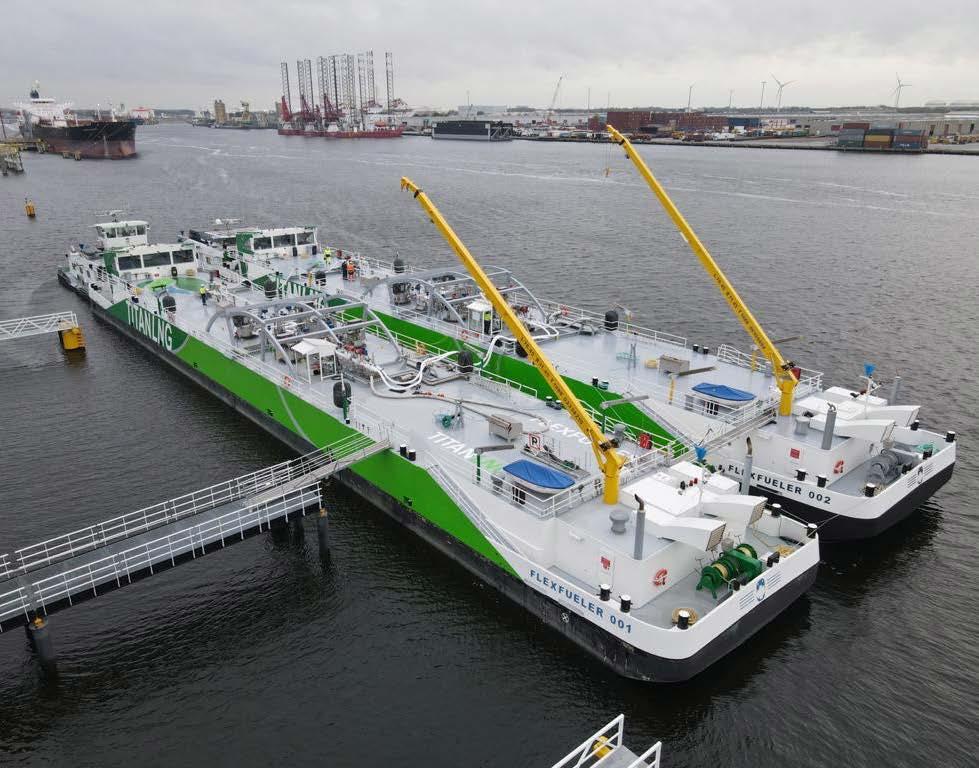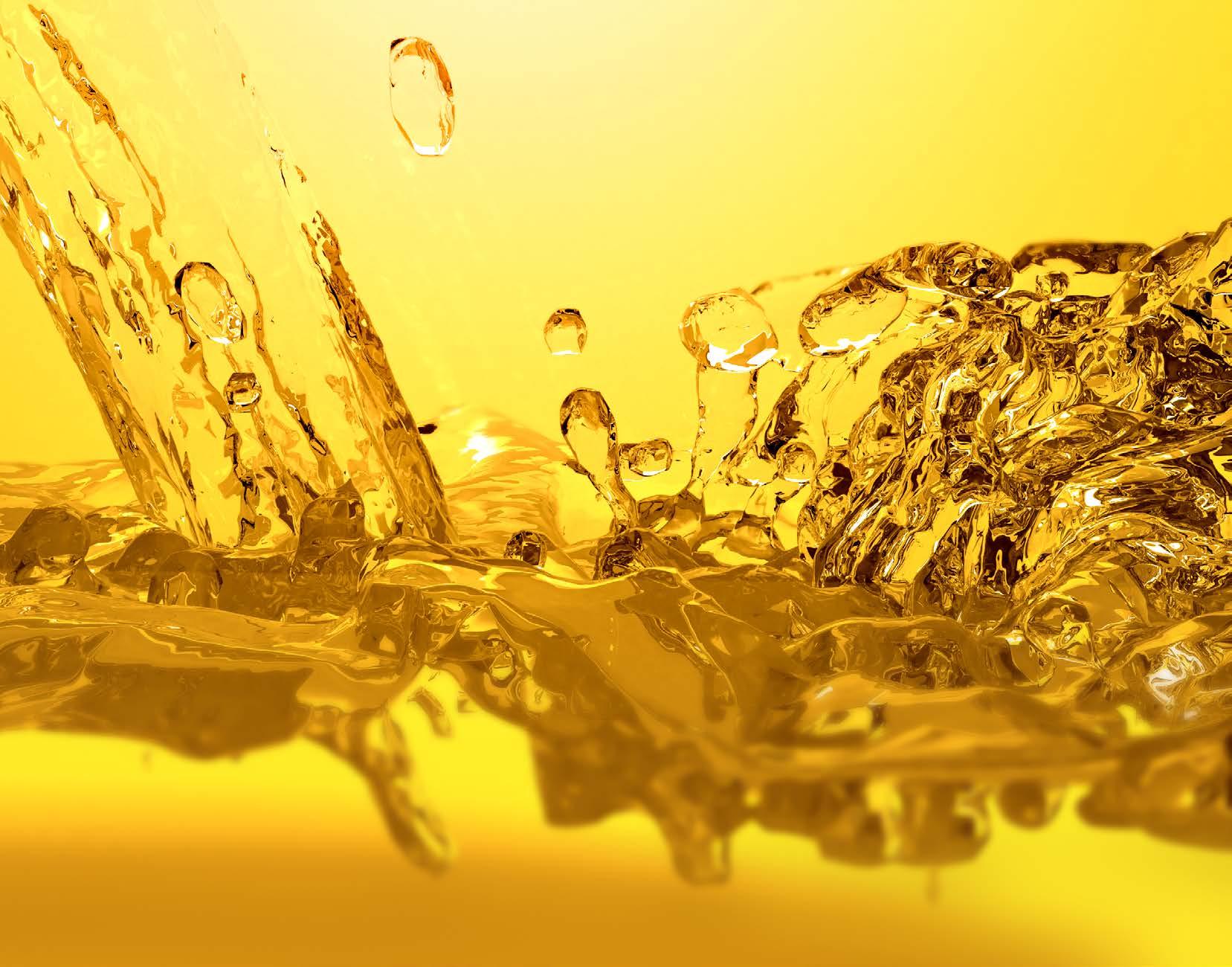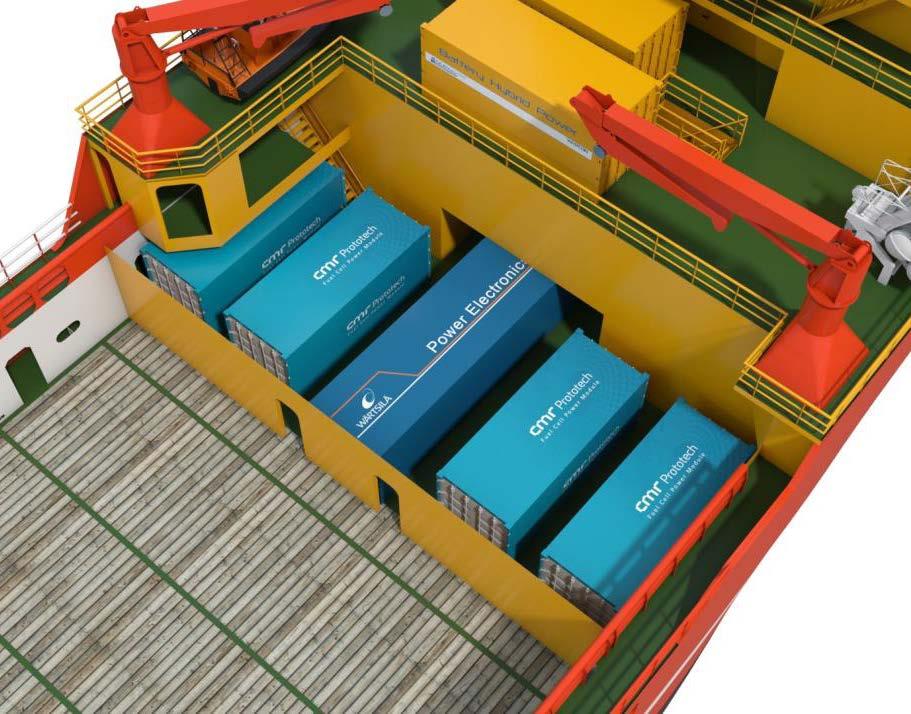
8 minute read
COATINGS
from CSI Spring 2021
by Maritime-AMC
Coating and cleaning underwater sections of vessels’ hulls — including niche areas — will help to ensure the ship is operating efficiently and not fouling the environment

David Loosley Secretary General and Chief Executive Officer, BIMCO
COVERING A
NICHE SUBJECT
Late last year, BIMCO issued an industry note advising that cleaning a ship’s submerged parts from barnacles and other growths, while the ship is in the water, can transfer invasive species to local marine environments unless it is properly cleaned and the debris is captured.
To combat this problem and to provide clarity and quality assurance to shipowners, ports and government authorities, BIMCO and the International Chamber of Shipping (ICS) published the first industry standard on in-water cleaning of ships.
“This standard will help protect the environment in the port. Not only that, it will also help every organisation that is part of this process by raising the minimum standard of cleaning several notches higher and ensure that the end result is both a clean ship, and safe working practice,” said David Loosley, BIMCO secretary general at the time of its release.
Organisms growing on the ship increase its drag through the water and can reduce fuel efficiency of the ship by as much as 35%, leading to higher fuel bills and higher CO2 emissions. It is therefore important to remove the growths every couple of years, BIMCO claimed.
A number of countries and regions have put biofouling management high on the agenda, with regional and national regulation on the drawing board or already in place. This includes the US, Australia, the Baltic Sea region, New Zealand, Hawaii and California.
John Stawpert, ICS manager (environment and trade), added: “This new industry standard establishes a benchmark for safe and environmentally sound underwater hull cleaning, an issue that is of increasing concern to the international community.
“We hope that this first step by industry bodies will allow cleaning companies to demonstrate that their products protect the marine environment and that shipowners can be confident that their ships are cleaned to a safe and effective level around the world.
“With these industry standards, port authorities can also have confidence
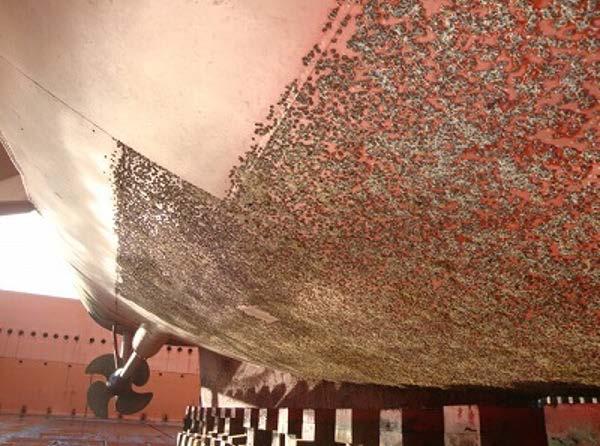
Underwater areas of a ship’s hull can get badly fouled (credit: I-Tech)
that underwater hull cleaning can be completed with minimal risk to the environment by independently approved cleaning companies working to proven high standards,” he said.
According to the industry standard, at least 90% of the macro fouling must be captured by the cleaning company, and effluent water coming back into the sea will have removed organisms and materials down to a microscopic size (0.000001m).
For BIMCO and the partners involved, the next step is to implement the standard on a small scale and several shipping companies have already signed up to participate, the organisation said.
“It is one of the typical, long-term, unglamorous, behind-the-scenes efforts that the industry undertakes, which will hopefully have a widereaching positive impact on the marine environment and the industry,” Loosley said.
The industry is now working to implement the standards with a number of stakeholders, including paint manufacturers, in-water cleaning companies, shipowners, ports, and classification societies.
They will have to update their procedures, which will lead to successful cleanings, and ultimately — BIMCO and ICS hopes — to a general wide-spread acceptance of the standard and associated certification and in more ports allowing in-water cleaning.
The standard details planning, the documentation and assessment part of the operation, as well as the actual cleaning, the management of the effluent — the water involved in the cleaning — including the capture of particles, before it is released back into the sea.
The standard also includes: » Criteria for the cleanliness of water pumped back to sea » Methods to help shipowners act before the biofouling growth and coverage become severe » An approval procedure for cleaning companies » Minimum reporting requirements » Minimum requirements for an inspection, service and cleaning reports. The standard was developed by a coalition of companies and organisations, which included Akzo Nobel, BIMCO, C-Leanship, CMA Ships, DG Diving Group, Fleet Cleaner, HapagLloyd, Hempel, HullWiper, International Association of Classification Societies, ICS, Minerva Shipping, Portland Port (UK), Port of Rotterdam and PPG Coatings.
Also commenting on the subject, paint manufacturer I-Tech said that marine biofouling build-up on ships’ hulls and submerged niche areas may be out of sight and out of mind, even though they represent a huge
environmental impact and a constant commercial threat building up under the waterline.
The negative impacts of biofouling are increasingly well-documented and the issue has been thrust into the spotlight in recent years due to the huge risk that ship hulls, as a vector for invasive aquatic species (IAS) transfer, pose to biodiversity in local ecosystems and economies around the globe.
Biofouling on a hull also decreases a ship’s efficiency, since it creates additional hydrodynamic drag when the hull travels through water. This in turn creates greater fuel demand to maintain the same speed through water. Or, if a ship is operating on fixed shaft power or a set fuel consumption, speed losses result.
One type of biofouling organism has a particularly detrimental effect on ship efficiency and fuel consumption is the barnacle. Grouped with other hard-shelled organisms, this type of “hard biofouling” will create the highest levels of hydrodynamic drag on a hull.
A study conducted by I-Tech and independent coating consultants the Safinah Group last year revealed that barnacle fouling adds an estimated $6bn to the shipping industry’s annual bunker bill.
This huge figure is based on the study findings that out of 249 ships of most types and sizes inspected over a four-year period between 2015 and 2019, more than 40% were suffering from over 10% hard fouling coverage on the hull. This level of hard fouling and its impact was quantified using published data taken from a 2011 study by Michael P Schultz that examined biofouling impact on shaft power requirement.
The scale of barnacle fouling on the global fleet, as quantified in the study, also makes this type of biofouling a significant contributor to shipping’s carbon footprint since even 10% barnacle fouling on just under half of the global shipping fleet would equate to around 110 mill tonnes of excess CO2 emissions annually.
Shipping’s carbon footprint is increasingly being scrutinised by regional regulators and the IMO, as well as outside commercial influences, such as the Poseidon Principles and the Sea Cargo Charter.
Given that the biofouling challenge is only likely to increase as water temperatures rise, due to the impact of climate change, it should be of key consideration when tackling the de-carbonisation of ships for owners and operators, especially as warming waters temperatures increase the risk of barnacle fouling and many of the industry’s key trade routes put ships directly in biofouling hotspots.
Yet, even among those that recognise biofouling on ship hulls as being a huge risk to the bottom line and to the environment, there is an additional sub-layer of sea blindness emerging.
While a significant amount of emphasis is focusing on biofouling on the flat surfaces of the hull, there are other areas within a hull structure that are not so well-known for their risk to the environment and ship operations if biofouled — niche areas.
Cumulatively, niche areas represent a significant proportion of the underwater surface area of the global shipping fleet — about 10% of the total surface areas available for colonisation by biofouling marine organisms.
While biofouling in niche areas — which includes sea chests, gratings, and box cooler inlets — may be a small percentage of a vessel’s hull surface, these areas can cause a huge negative impact to a ship’s operations.
I-Tech and Safinah’s research study also found that hard fouling was present in 95% of niche areas in the 249-ship sample inspected and analysed.
Therefore, even if a ship has a barnacle-free hull, its niche areas could be heavily infested, putting the vessel at risk of spreading IAS and also putting the functionality of the niche area at risk of malfunction.
Although the main penalties of biofouling in niche areas lie within the regulatory efforts to limit the spread of IAS, particularly in certain regions of the world, there are also commercial drivers to dealing with niche areas head on.
For example, biofouling in box coolers can impede the engine cooling system, reducing their efficiency in cooling inlet water during the start-up process as part of the cold-water chain. In the worst-case scenario, heavy fouling of the sea chest grate can lead to a total failure of the box cooler.
Undoubtedly, current approaches to preventing the build-up of biofouling in niche areas are not up to standard, yet there are simple steps that the shipping industry can take to tackle this problem, the company said.
The first step is to pay greater attention during antifouling coatings application to niche areas. For example, taking greater care during the coating application process. This includes considering antifouling coatings with a higher polishing rate for specific use in the niche areas and those that include additional protection against barnacle fouling, such as antifouling coatings that contain the patented Selektope, an active agent which, when added to coatings, repels barnacles even under extended static conditions of 45 days plus.
When it comes to niche areas and preventing biofouling build up, it’s time for greater attention to be paid to biofouling mitigation in these areas, and this isn’t just a case of taking advantage of antifouling coating technology in the short term.
The application methods and the design of niche areas should be re-visited on a long-term basis, I-Tech recommended.

